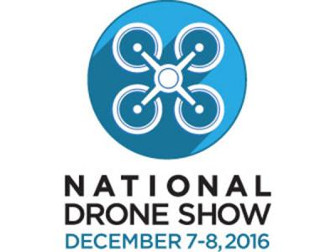GV Expo: Stampede Predicts Drone Use Will Greatly Expand
WASHINGTON-The “commercial tsunami of drones is underway, as we all know,”says Fred Bivetto, Dean of the School of Unmanned Technology, who spoke at the Government Video Expo on how law enforcement and public safety agencies could implement UAVs to do their jobs.

The military has for a while been the primary users of UAVs, but now that the technology has trickled down into the commercial sector it's only a matter of time until law enforcement and emergency response personnel begin to implement them, says Bivetto.
According to Bivetto, an agency can justify using a UAV if it is able to save “time, lives and money” or if the job the drone would be used for, is either “dull, dirty, or dangerous.”
“Is it a stakeout? For instance, if you put a drone over that house with change detection software, the operator could be sleeping and can be alerted to an activity,”Bivetto theorized.
Another possible scenario could be for inspection purposes, for situations where hazardous materials are in play and even for police personnel responding to a potentially deadly circumstance, like an armed standoff.
If a user is past the “needs more convincing stage,” Bivetto says he tells his clients to consider these four points when figuring out what type of gear is needed:
1.What are you trying to shoot or measure? This point determines what camera or sensors are needed.
The professional video industry's #1 source for news, trends and product and tech information. Sign up below.
2.How is the data going to get from the drone to the user? This point determines the type of signal to be used and what equipment is needed, like antennas and transmitters. Range, weather, resolution and what is needed to perform the mission needs to be thought about during this bullet point.
3.What will be the user’s Ground Control Segment? These are things like a user’s cell phone or iPad to see the video be transmitted from the drone or on a bigger scale, a command and control station.
4.The drone. A UAV that is capable of performing to the standards set in the previous three bullet points.
“I look at it this way. The sensor or the payload is the gladiator and the drone is the chariot. The only reason for the chariot is to get the gladiator to the fight,” Bivetto concludes.
Bivetto noted that commercial drone technology has increasingly been producing infrared cameras at a smaller and more affordable price-a tool allowing drones to work in night environments. The UAV types have grown as well, ranging from micro UAVs, where some models take the form of a mosquito and are mainly used for data collection purposes. Then there is the ultra large, Medium and High-Altitude Long Endurance Drones, where the vehicles can stay airborne for long periods of time at an altitude above where typical air traffic operates and serve as a satellite. The technology even now exists, Bivetto says, for airplanes to be converted into totally auto-piloted vehicles, known as Optionally Piloted Aircraft.
Fred Bivetto will be speaking in two more sessions at the Government Video Expo. For more information about the School of Unmanned Technology, click here.
